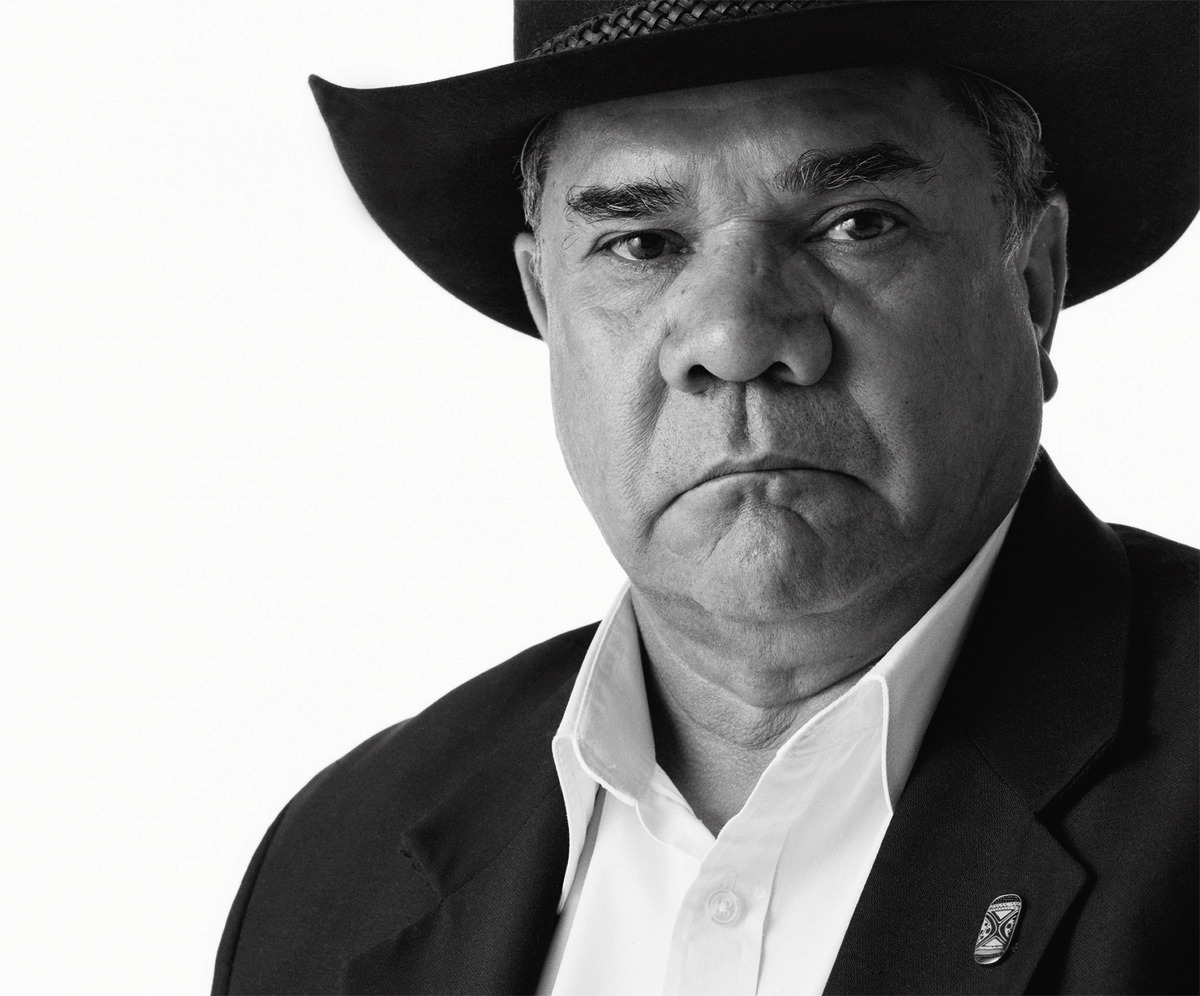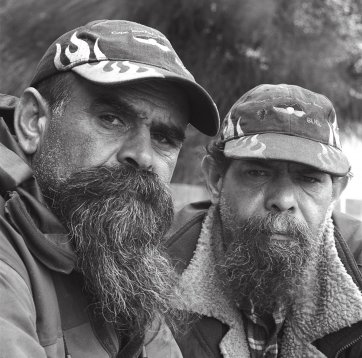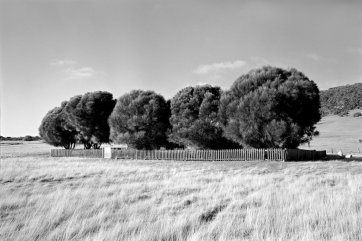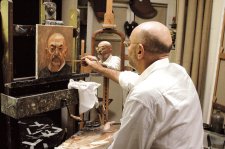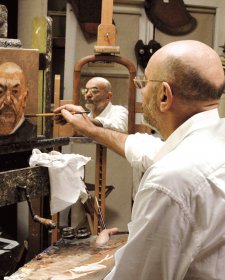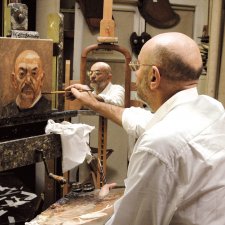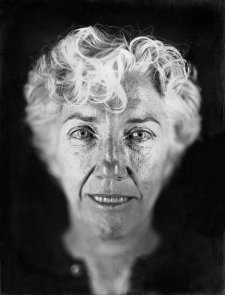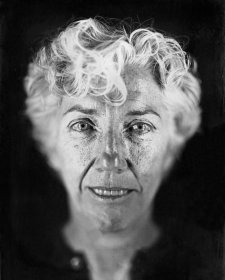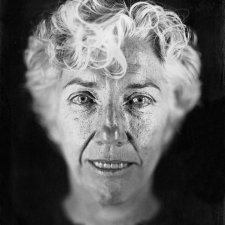Quite deliberately, I had not worked out in advance how to portray Mick. Although I was very excited to do this work, I needed to have patience and remain unassuming. I had only met him once in the past. However, being such a prominent figure in the Aboriginal Nation, everyone knows of him and his dedication to Aboriginal people. I envisioned more about reaching that point where we share that moment.
This of course you cannot foretell. Be prepared to take risks. As Arnold Newman the great portrait photographer states, great photographs are great no matter when or how they are taken. They speak of the medium. What really matters is the commitment the photographer has made to the moment. Whilst I come to my work with a certain disposition I look for that point of departure, that other space freeing me up to respond – this is really important. My technique and craft should perform as second nature.
I had determined a final print presentation. Knowing the appearance of his black hat, which I felt was really his signature, I asked Mick to wear a dark jacket because I wanted a full frame on large format showing the black border of the film edge. I thought this would present impact and visual attention when viewing the final print as the viewer entered the gallery. I also wanted him off centre in the frame, this instantly creates a visual curiosity. We need to grab the viewer’s attention. This leads to the most important point. Portraits need to be engaging.
My usual approach is one that is done over a long period of time, sometimes weeks when in another community. As with the Wik portraits from Aurukun, Queensland which was done over several weeks for five pictures. It’s not just about developing a rapport with my subject but rather about building friendships. I came away from that work firmly believing that a good portrait was the result of ‘an intimate conversation between two people’.
With this portrait of Mick the situation was different yet my principles of approach remained the same, it is about involving people actively participating in the picture making process. A kind of co-authorship and working towards an equal relationship, where I relinquish my role to a degree as director and camera operator and get to a point of mutual understanding and respect. As a documentary photographer I come from a long background of working within a long tradition that involves high ethics.
I have through experience set myself certain disciplines in approach, representation, authenticity and responsible use of the material. Approach is everything and sets the context for everything in regard to the perception, the function and interpretation of images. Ultimately, as artists we should all ask ourselves, ‘what do we bring to this work?’ Despite the one-hour limit, the whole session flowed very well. I work with a big, old, wooden and brass bellows camera with cut film slide holders under a dark cloth. I still love the craft of image making and working within this long tradition. A contemplative approach teaches you to see before you press the shutter.
In the past I used Polaroid pictures from a holder that attached to my wooden and brass camera. The production of Polaroid film has ceased and silver halide materials and products are falling by the wayside, which is a real threat to traditional methods. This was the first time I used ‘today’s Polaroid’, a digital camera tethered to a computer and Mick could see the image from where he was sitting. It developed into an exchange of ideas and seeing what he liked. The final images were made on the wooden and brass camera with only six sheets of film. I knew I had the picture we aimed for. Your interpretative view will always show inside that collaboration, this you can be sure of.
To a degree, I did change my idea of how the portrait would work during the session. I wanted a full frame with film edges, which is taking risks on a big camera and demands a lot more time. We overcame that with a presentation that was similar to the original idea anyway, by using a black core matte for the frame. I could not manage the frame the way I wanted so I backed the camera off a bit and decided to crop in allowing for some flexibility. It is a big negative so I was confident this would work, and it did. These are decisions that I make quite quickly and don’t let it bother me because my intensity and concentration is on another level.
I wanted the portrait to express a quiet strength and dignity. One thing that comes through in all of my work is the indomitable spirit of Aboriginal people. I do not strive for it, but it always presents itself in some way. It is an awareness of the reason I am doing this, exactly where I place my tripod and my closeness to the medium. Here you have two strong Aboriginal men involved in the picture-making act and as well as having culture as a bond we are both humanitarians. For a long time I have been close to Wendell Berry’s definition of a successful poem, ‘it does not disturb the silence from which it came’.
